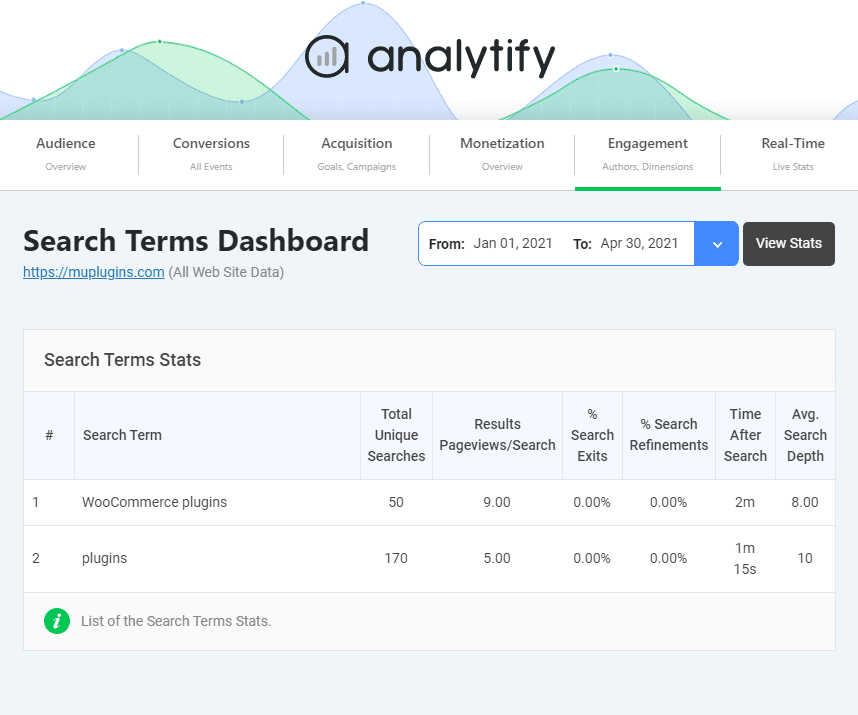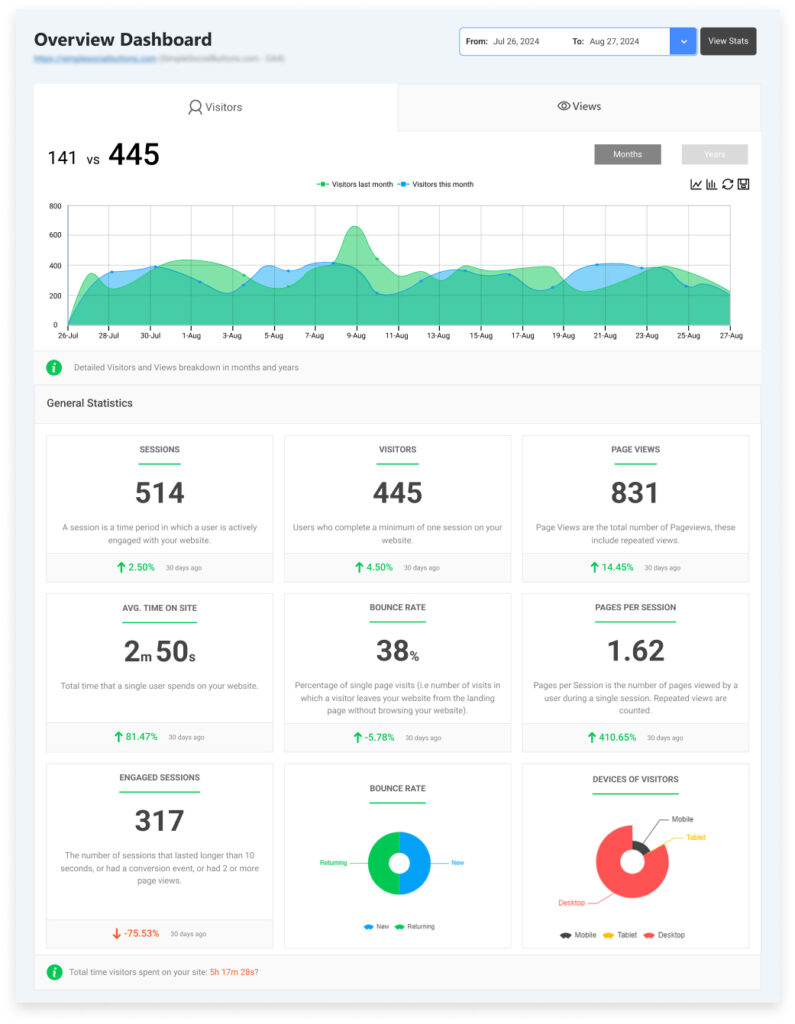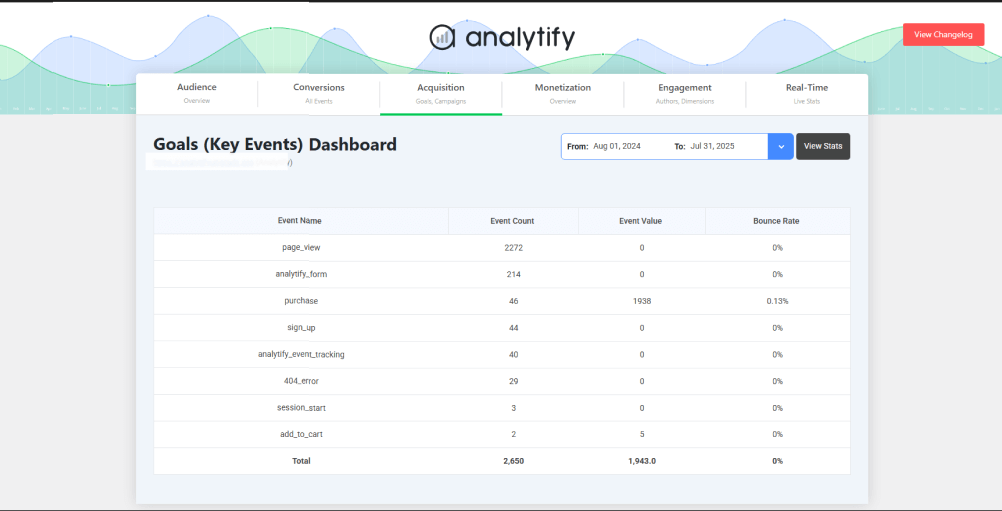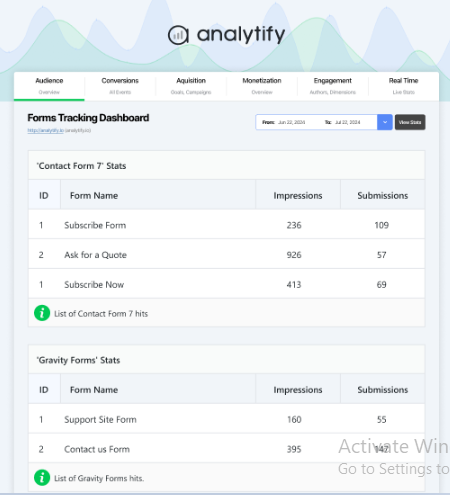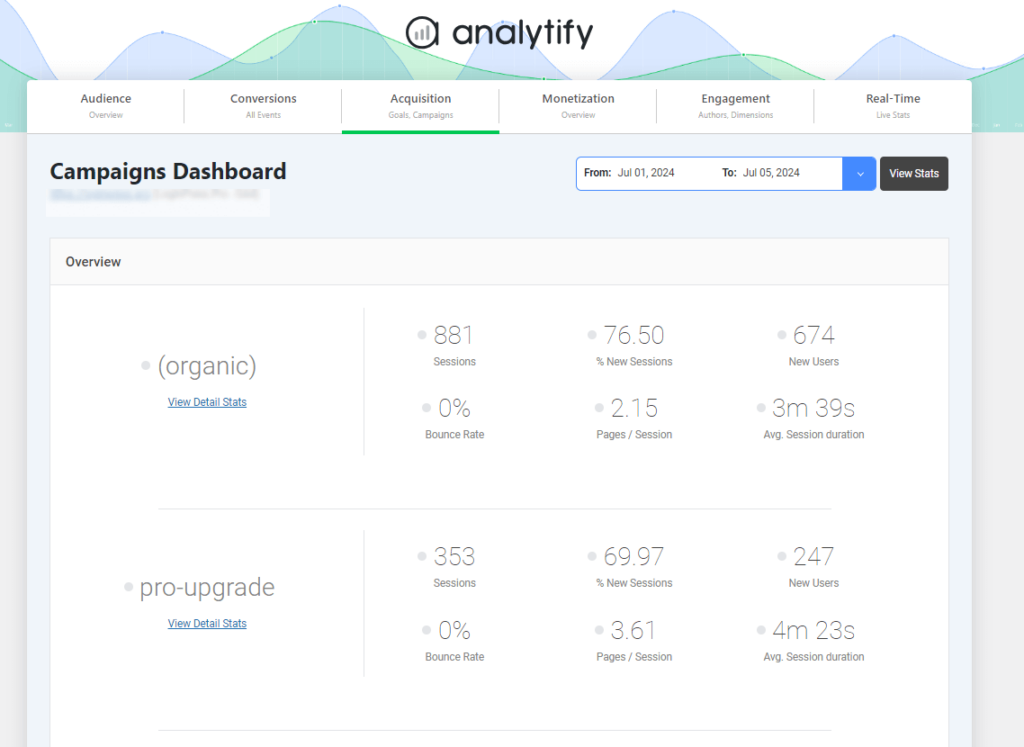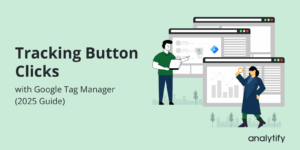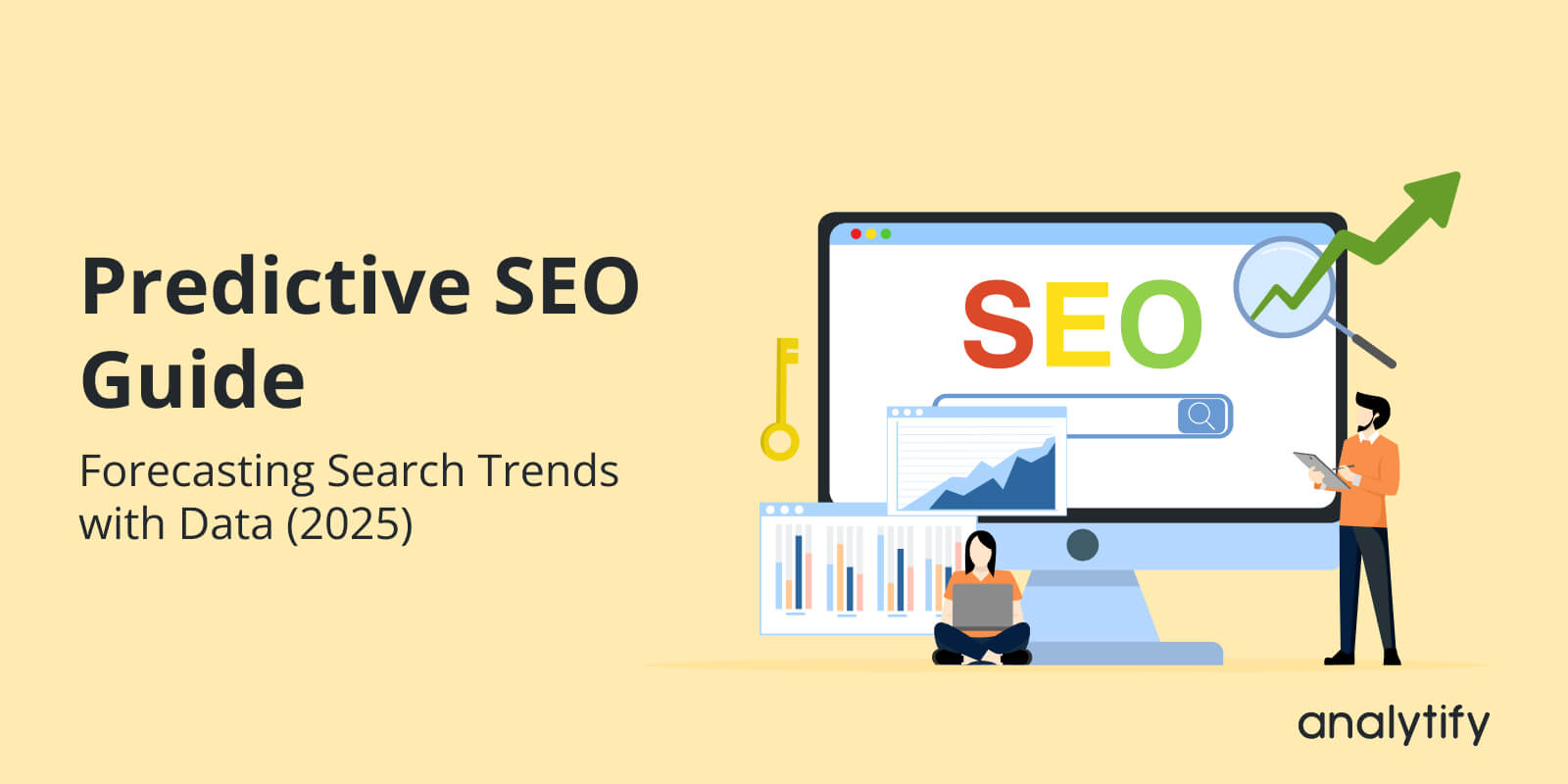
Predictive SEO Guide: Forecasting Search Trends with Data (2025)
In 2025, SEO isn’t just about reacting to search trends; it’s about anticipating them. The brands that win traffic today aren’t guessing what users will search for next. They’re using predictive SEO to see the patterns before they peak.
SEO trend prediction means using data, analytics, and historical patterns to forecast what your audience will be searching for tomorrow. It shifts your strategy from reactive updates to proactive planning, helping you publish the right content before competitors do.
In this guide, you’ll learn how to use predictive SEO to forecast upcoming trends, identify rising keywords, and plan content before your competitors do. You’ll also learn how to predict SEO results and how to use predictive analytics for SEO.
Whether you manage a blog, WooCommerce store, or content-heavy site, predictive SEO helps you stay one step ahead of Google’s algorithm updates and audience behavior shifts.
Predictive SEO Techniques (TOC):
What is Predictive SEO?
Predictive SEO is the practice of using data, analytics, and AI tools to forecast which search terms, topics, or trends are likely to grow in popularity before they actually peak.
Instead of relying only on historical reports, predictive SEO looks ahead, helping you plan content and campaigns that align with future user intent.
Think of traditional SEO as looking in the rearview mirror. It’s like analyzing what worked yesterday. Predictive SEO, on the other hand, is your GPS for search strategy, showing where your audience is headed next.
Here’s how to predict SEO results in simple terms:
- Collect historical data — from Google Analytics, Search Console, and other platforms.
- Analyze user behavior and trends — such as page views, queries, and engagement.
- Use predictive insights to create or optimize content that matches rising search interests.
That’s how you predict SEO traffic. For example, if traffic for “AI content tools” starts increasing slightly this month, predictive SEO helps you identify it early, so you can create related content before competitors flood the topic.
By combining this approach with Analytify’s built-in analytics for WordPress, you can easily visualize keyword trends, audience patterns, and engagement metrics without needing advanced tools or separate dashboards.
Why Predictive SEO Matters in 2025
Search behavior and algorithms are changing faster than ever. In 2025, success in SEO is no longer about reacting to trends after they happen; it’s about anticipating what’s next. That’s why your business needs to adapt to a data-driven SEO strategy based on predictive SEO, which becomes essential.
Search engines are now powered by AI systems like Google’s Search Generative Experience (SGE) and Gemini. These tools analyze intent, context, and conversational queries in real time. This means ranking factors are no longer just about backlinks or keywords. They’re about how well your content aligns with emerging user behavior.
At the same time, user search habits are evolving. People are using voice search, mobile assistants, and visual queries more than ever. They ask complex, multi-intent questions like “What’s the best tool to track SEO growth for WordPress in 2025?” Traditional SEO struggles to adapt to such detailed and evolving questions. Predictive SEO, however, looks ahead using data to spot which types of questions and keywords will rise next.
Competition also makes timing critical. The earlier you publish around an emerging topic, the higher your chances of ranking before the keyword becomes saturated. Predictive SEO helps you find those opportunities by analyzing patterns in traffic, impressions, and engagement.
Data-driven brands already rely on this method. According to BrightEdge, over 60% of leading marketers use predictive analytics to guide their SEO and content strategy. It’s not just about staying ahead, but it’s about staying visible when algorithms shift.
In short, predictive SEO matters in 2025 because it helps you adapt to an AI-driven search world, understand user intent earlier, and plan strategies that deliver consistent results even as search engines continue to evolve.
How to Use Predictive SEO with Analytify
Join 50,000+ beginners & professionals who use Analytify to simplify their Google Analytics!
You don’t need complex spreadsheets or coding skills to forecast SEO trends. With Analytify, you can turn your everyday analytics into predictive insights right from your WordPress dashboard. By connecting Google Analytics 4 (GA4) and Google Search Console, Analytify helps you see which pages, queries, and audiences are growing before your competitors notice.
Below are five practical steps to use Analytify for predictive SEO inside WordPress.
Step 1: Visualize Rising Keywords in Your Dashboard
Predictive SEO starts with recognizing patterns, and Analytify makes that easy. Once you connect your GA4 and Search Console, you can view real-time keyword performance directly in WordPress.
Analytify connects your Google Analytics 4 (GA4) and Google Search Console data directly to WordPress.
From your dashboard, you can see which search queries are bringing traffic to your site and which ones are starting to grow.
If a keyword’s impressions are increasing but clicks are still low, that’s a sign of an emerging topic. You can create or update content around it before competitors even notice.
Example: If you see “AI SEO strategy 2025” getting more impressions, it’s time to write a blog or optimize a page for it now, not six months later.
That’s how you can do future keywords analysis. This data-driven SEO strategy helps you stay proactive, not reactive. You’ll stop chasing competitors and start predicting what your audience will search for next.
Step 2: Monitor Content That Builds Engagement Over Time
Predictive SEO isn’t just about keywords; it’s also about content longevity. Analytify lets you see which pages or posts continue to attract visitors months after publishing.
From your dashboard, you can monitor key metrics like average session duration, bounce rate, and returning users. These numbers help you identify evergreen content that holds attention and signals rising interest. For instance, if one of your guides keeps improving in engagement rate, that’s a sign to expand or update it before it peaks in traffic.
By following these engagement patterns, you can forecast which topics will remain valuable in the coming months. It’s an easy way to plan updates or new posts that match your audience’s evolving interests without guessing.
Step 3: Pinpoint Untapped Opportunities for New Content
Sometimes, the best predictive insight hides in your Search Console metrics. Analytify helps uncover these insights by combining high impressions and low click-through rates (CTR).
If a keyword has many impressions but few clicks, it means people are searching for it but not finding the perfect result yet. That’s your signal to create or improve content around it.
Analytify’s built-in reports make it simple to filter by low CTR or high impression queries. You can quickly find rising topics, add missing keywords, or create fresh articles before competitors notice the trend.
In other words, Analytify helps you turn “underperforming” keywords into predictive content opportunities directly inside your WordPress site.
Step 4: Forecast Conversion Potential from High-Intent Visitors
Predictive SEO isn’t just about visibility; it’s about forecasting performance. Analytify gives you a clear view of which sources, pages, and campaigns are most likely to convert in the future.
By analyzing GA4 event data such as button clicks, form submissions, and purchases, you can identify high-intent visitor patterns. For example, if certain blog posts consistently lead users to your pricing page, you can predict that similar content will attract more conversions in the next cycle.
This insight lets you plan your SEO strategy around ROI-driven forecasts, not just traffic growth. You’ll know where to invest your time on content that actually drives engagement and revenue.
Step 5: Leverage AI-Enhanced Analytics for Smarter Decisions
In 2025, AI tools and predictive SEO go hand in hand. Analytify’s dashboards work seamlessly with AI-assisted platforms such as Google Gemini, ChatGPT, and GA4’s AI Insights. Together, they help you simulate search behavior and test new ideas faster.
You can export data from Analytify and feed it into AI tools to predict topic growth, seasonal trends, and search intent shifts. For instance, combining your Analytify keyword trends with AI-generated forecasts can reveal upcoming keyword clusters before they appear in mainstream reports.
You can use AI to:
- Simulate possible search trends
- Predict how a keyword might perform
- Suggest new related topics before they peak
This blend of human insight + AI analytics gives you a clear competitive edge. You’ll be making SEO decisions based on future patterns, not past results.
Advanced Predictive SEO Techniques
Once you’ve mastered the basics of trend forecasting with Analytify, it’s time to take things a step further. Advanced predictive SEO focuses on precision using richer data and segmentation to forecast which audiences, keywords, and campaigns will deliver the most value in the future.
Here’s how you can apply advanced predictive SEO techniques inside WordPress with Analytify:
1. Use UTM and Campaign Data to Forecast High-Value Traffic
Every campaign tells a story. By analyzing your UTM parameters in Analytify, you can see which traffic sources, email, social, or ads, bring the most engaged users. If you notice certain UTM tags consistently drive long sessions or conversions, you can predict that similar campaigns will perform well again.
Over time, these insights help you plan future campaigns with better accuracy. Instead of guessing what will work, you forecast based on real behavioral patterns.
Example: If your “Spring Sale” campaign brought 20% more returning users this year, it’s a strong signal that a seasonal version of that campaign will perform well next year too.
Key Tip: Regularly compare campaign data across months or seasons to spot repeat patterns.
2. Segment Your Audience to Predict Intent-Driven Traffic
Not all visitors behave the same way. Analytify lets you break down your audience by traffic source, device, location, and returning status. When you analyze each segment’s engagement trends, you can predict which audiences are likely to convert next.
For example, if mobile visitors from a particular region are showing steady growth, you can plan mobile-optimized content or localized campaigns for that audience. This technique helps you shape a strategy that aligns with your users’ future intent, not just their current behavior.
With Analytify, you can segment users by:
- Device (mobile vs. desktop)
- Traffic source (social, search, email)
- Location and language
- Returning vs. new visitors
By tracking how each group interacts with your site, you can predict which segments will bring future conversions and tailor your SEO and content to them.
3. Combine Predictive SEO with GA4 Events
GA4’s event tracking provides deep insight into user intent, clicks, video views, scroll depth, purchases, and more.
Analytify brings this data directly into WordPress, allowing you to link events like scroll depth, button clicks, and form completions with future goals.
By identifying which event sequences often lead to conversions, you can model likely outcomes and forecast which pieces of content or pages will perform best next quarter.
For Example, If more users are clicking “Add to Cart” on blog readers coming from a certain keyword, that keyword signals high commercial intent. You can then create more content targeting similar queries.
4. Forecast Search Behavior with Historical Trends
Your site’s performance over the past months or years is one of your best forecasting tools.
Analytify makes it easy to spot:
- Seasonal spikes (e.g., “holiday discounts” every December)
- Steady growth in long-tail keywords
- Drop-offs in old trends, you might be able to revive.
This helps you time your content, update older posts, and invest in the keywords that will matter next quarter.
Common Mistakes to Avoid While Predicting SEO
Even with the right tools, many marketers fail to get real results from predictive SEO because they overlook a few key practices. Avoiding these mistakes can help you turn data into accurate forecasts instead of misleading signals.
1. Reacting Too Late to Trends
Predictive SEO is about timing. If you only optimize after a topic becomes popular, you’re already behind. Check your Analytify dashboards regularly to catch rising keywords before they peak.
2. Ignoring Seasonal or Emerging Keywords
Many site owners focus only on current traffic leaders and miss future opportunities. Look for patterns that repeat each season or grow slowly over time; those often become strong long-term keywords.
3. Chasing High-Volume Keywords Only
High search volume doesn’t always mean high potential. Predictive SEO works best when you identify emerging, low-competition terms early.
4. Relying on Tools Without Context
Analytics tools like Analytify simplify data, but human insight still matters. Always interpret data with your audience’s behavior in mind.
Avoiding these common errors keeps your SEO strategy proactive, accurate, and future-ready.
Predictive SEO FAQs
1. What is predictive SEO in simple terms?
Predictive SEO means using your past data and current trends to forecast what people will search for next. It helps you plan and publish content before a topic becomes competitive.
2. Can small websites use predictive SEO?
Yes. You don’t need a big marketing budget. Tools like Analytify make predictive SEO simple by showing keyword and traffic trends directly in WordPress. Even small sites can spot early opportunities and grow faster.
3. How does Analytify help with forecasting search trends?
Analytify connects with GA4 and Search Console to show your top keywords, impressions, and engagement metrics. This data helps you identify rising topics, detect content gaps, and forecast which pages or posts will perform better next.
4. Is predictive SEO only for eCommerce or large brands?
Not at all. Predictive SEO works for any website that publishes content regularly, from blogs to service pages. The key is consistency in tracking, reviewing, and acting on data insights.
Predictive SEO: Final Thoughts
In 2025, SEO success belongs to those who think ahead. Predictive SEO isn’t just another marketing trend; it’s a smarter way to plan content, understand user intent, and stay visible in an AI-driven search world.
By turning your GA4 and Search Console data into future insights, you can move from reacting to search changes to leading them. Tools like Analytify make this process simple by showing keyword and engagement patterns directly inside WordPress.
When you know what your audience will search for next, every piece of content becomes a step ahead of the competition.
Start using predictive SEO with Analytify today and turn your analytics into your next growth strategy.
You may also like to read:
I hope this guide helped you in predicting SEO trends for your digital business. Now, I’d love to hear from you. What trends could you predict for your website if you started analyzing your data today?

